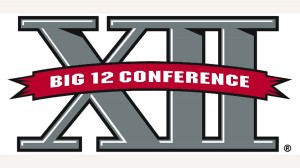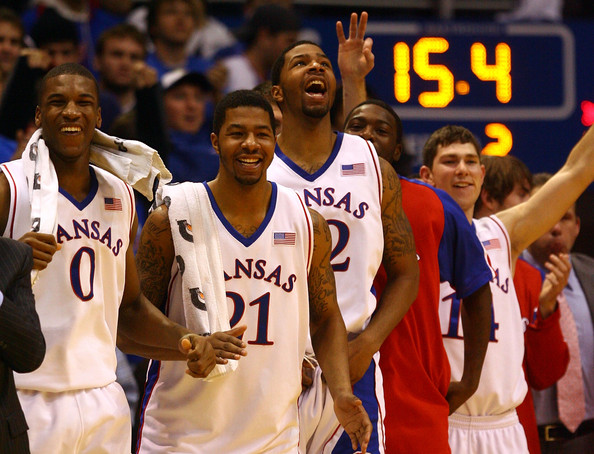RTC Summer Updates: Big Ten Conference
Posted by Brian Goodman on August 8th, 2011With the completion of the NBA Draft and the annual coaching and transfer carousels nearing their ends, RTC is rolling out a new series, RTC Summer Updates, to give you a crash course on each Division I conference during the summer months. Our latest update comes courtesy of our Big Ten correspondent, Will Green.
Readers’ Take
Summer Storylines
- Sully’s Back, But With Demands – In the year 2011, in the age of ‘now,’ in a profit-first educate-yourself-later society, amidst a flittering of teenage NBA draft picks, ferocious freshman phenomenon Jared Sullinger decided to stay in school. How quaint. Of course, there’s absolutely nothing quaint about Sullinger, his (rightly) assumed sense of on-court leadership, his brutally physical style of play, or that Ja Rule–esque snarl that makes him look like a squirrel who just ate a questionable nut. But seriously, it’s highly unlikely that anyone other than Jordan Taylor will stand in the way of Sullinger winning the Big Ten Player of the Year Award, and rightfully so. He has spent the better part of the off-season slimming down and getting faster. The best player on the best team in the conference simply can’t suffer a slump; he’s worked too hard and has clearly made a commitment to improving his game before leaving for the pros. The question is less about what Sullinger’s level of performance will be than it is about the effect his performance will have on other members of his team. Last year, his 17 /10 were a reflection of consistent contribution that was also part of a greater team-wide cohesion. Jon Diebler, David Lighty and even Dallas Lauderdale each had pronounced and vital roles on last year’s team. They’re all gone now. While some of the supporting cast and several new stars-in-the-making will join Sullinger, will increased reliance upon him make OSU more of a one-man show? Or will the Buckeyes continue to roll out a team-focused squad with four scorers in double figures and a core group of five guys who notch 30 minutes a game? Whatever happens, Sullinger will be back and he will be better than last year. Consider yourself warned.
- Welcome, Nebraska – On July 1, Nebraska officially joined the B1G, an acronym whose ludicrousness we continue to subconsciously validate by pronouncing it ‘Bih-one-ggg’. If you’re scoring at home, UNL’s entry makes for 12 teams in the Big Ten, a conference that shouldn’t be confused with the Big 12, which only has ten teams now since Nebraska left it. Now that we’ve all scratched our heads for second, we should pause to consider how massive the amount of potential football revenue must have been to persuade the intransigent Big Ten to alter its ranks. The Cornhuskers’ inclusion marks only the second change in league makeup since the 1950s. So how will the other 11 schools adjust to the adjustment? Football-wise, they should all watch their backs. On the basketball court, though, it probably won’t have a big (or should we say, a ‘B1G’) impact. Sadly for Husker fans, their roundball team loses two of their top three scorers and has some major offensive issues to solve in a league whose tempo of play limits even the country’s very best offenses. Head coach Doc Sadler continues to recruit a healthy mix of transfers and high school players, but over his five-year tenure nine of them have left due to reasons other than matriculation or the NBA. Nebraska has had some encouraging moments in recent years, including a five game improvement in Big 12 play from 2009 to 2010 (from 2-14 to 7-9). The team’s defensive efficiency would’ve finished fourth and it’s adjusted tempo would’ve finished fourth slowest in last year’s Big Ten. In some respects, Nebraska feels like a perfect match for the conference. And yet, for many of those same reasons, it might be a little out-matched in its first few years.
- Ed DeChellis Leaves For Navy – Nowadays, stories like these are rarer than that bloody slice of carpaccio you once had at a fancy restaurant: a coach leaving a higher paying, higher-infrastructure, higher strength-of-schedule situation for a middle of the pack team in a unambiguously low-major conference. Make no mistake: Ed DeChellis didn’t become the new head coach at Navy. He stopped being the head coach at Penn State. Unless they’re ousted via scandal or especially egregious results you simply don’t hear about power six coaches voluntarily leaving for a “lesser” job. And yet, that’s exactly what happened. Or is it? The answer to that question centers around just how much “less” of a job the Navy coaching position really is, and if anything DeChellis might have done warranted the move. The wink-wink nudge-nudge consensus is that while DeChellis didn’t necessarily knock anyone’s socks off, the school refuses to take basketball seriously. Some have lambasted the athletic department’s commitment to DeChellis and the program overall at a school that’s known best for intense linebackers and an 84 year-old Italian-American man. It will be interesting to observe new head coach Patrick Chambersin his first few seasons and see whether or not he runs into a similar set of struggles as DeChellis did during his tenure. If the holistic drawbacks of coaching in University Park really outweigh the benefits to the extent that someone would walk away from the position, then PSU has bigger problems to fix than figuring out how to win in the Big Ten this season. But if anyone can overcome whatever said “drawbacks” may or may not be, it’s Chambers.












































